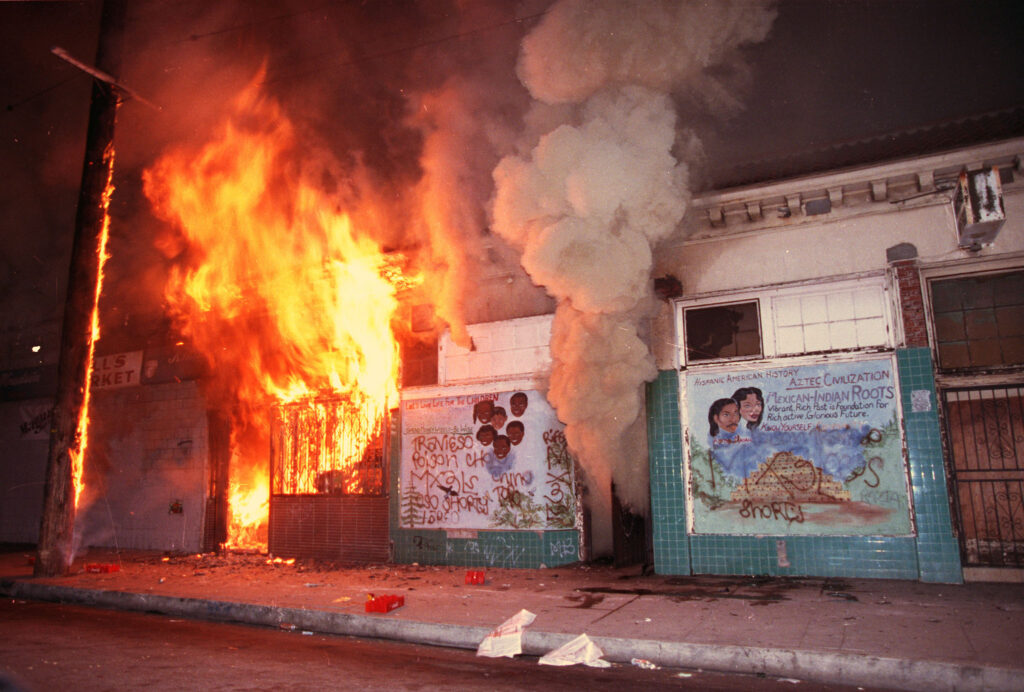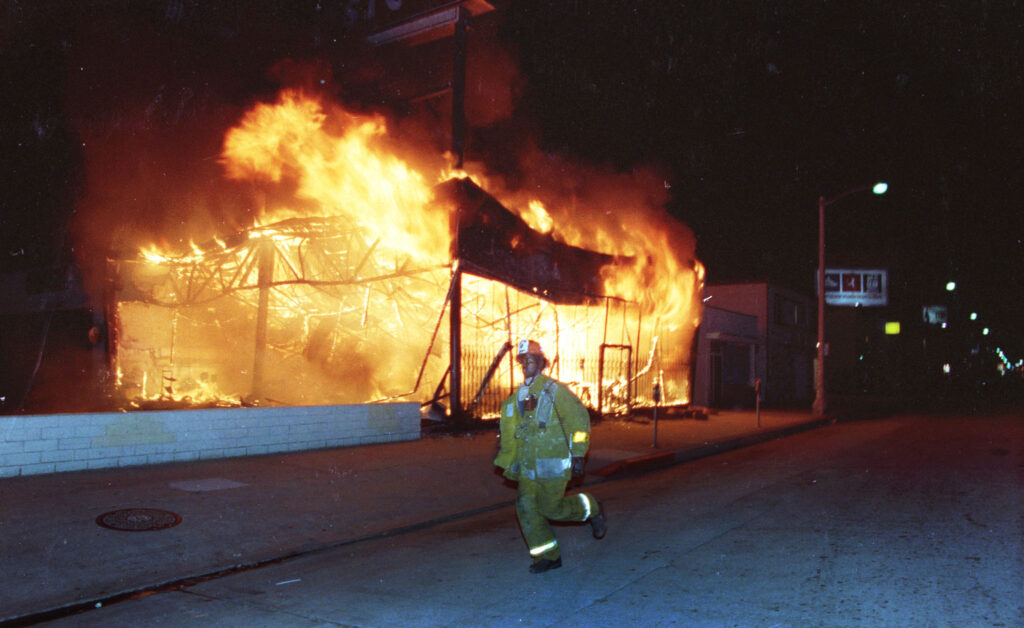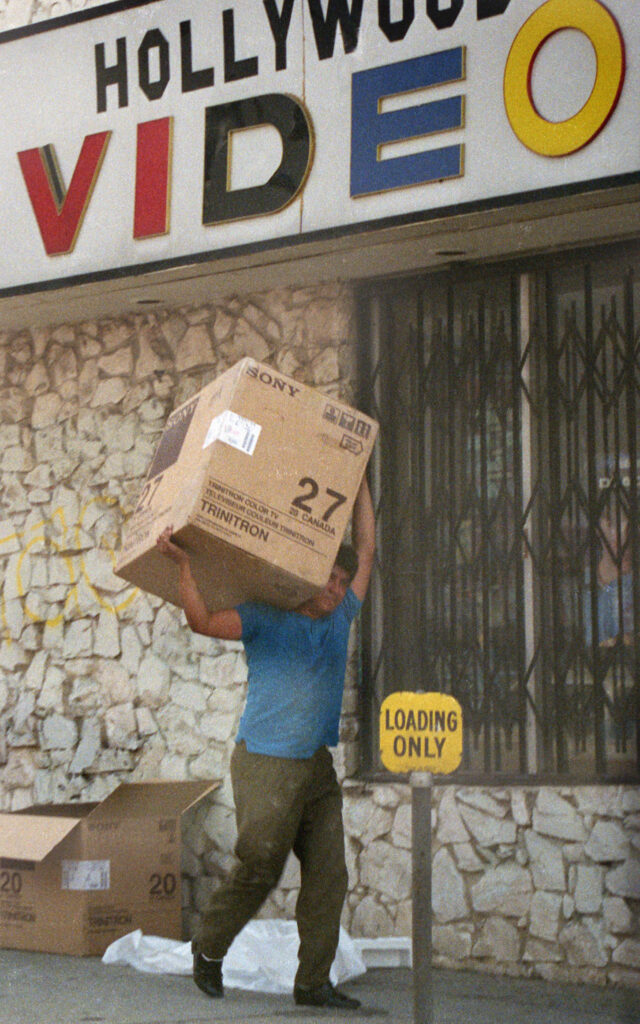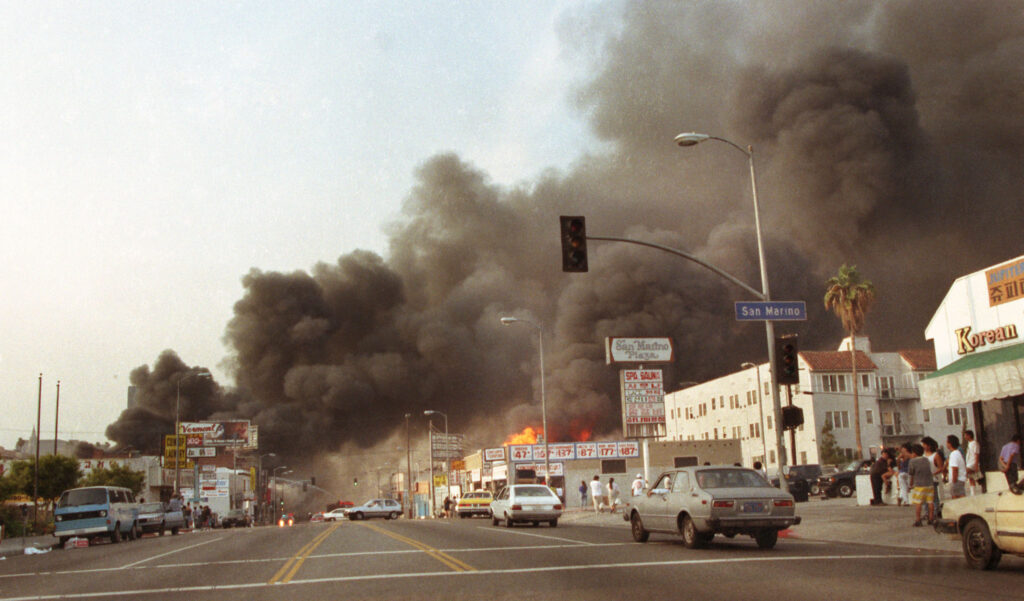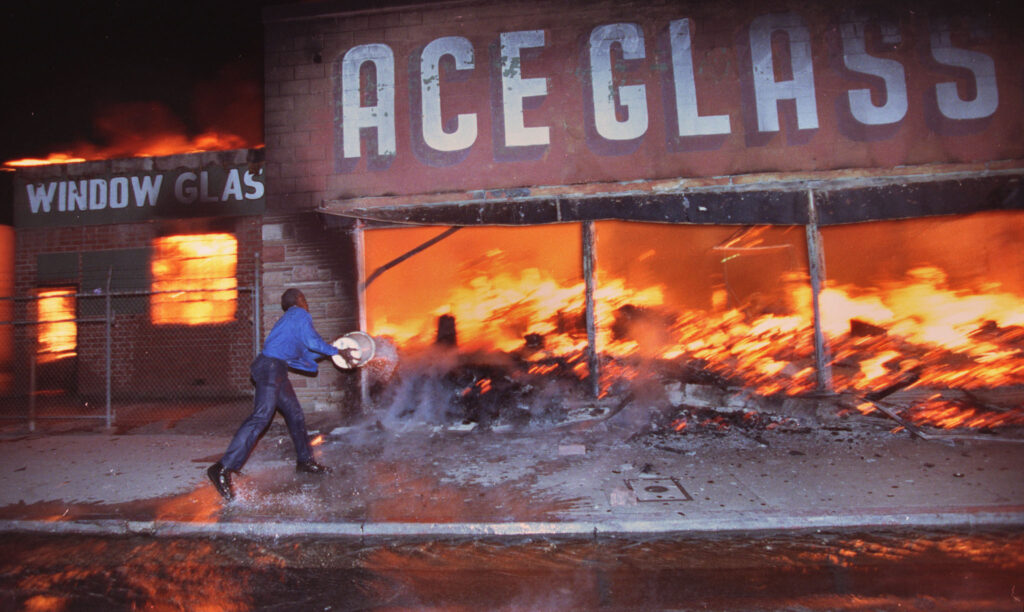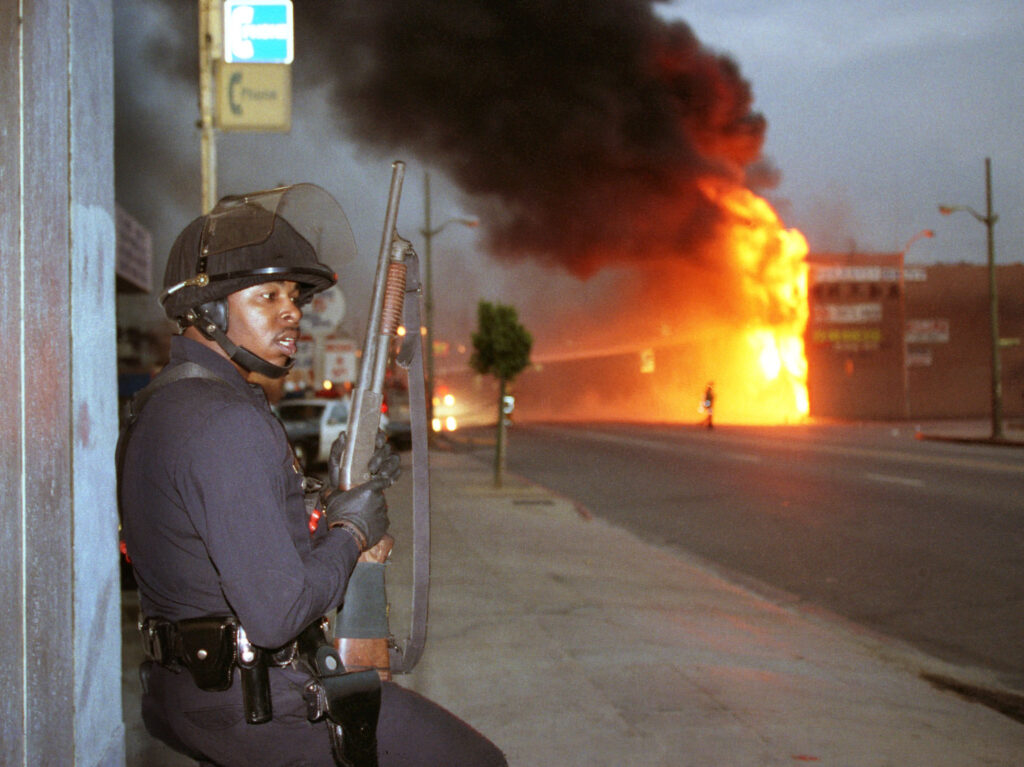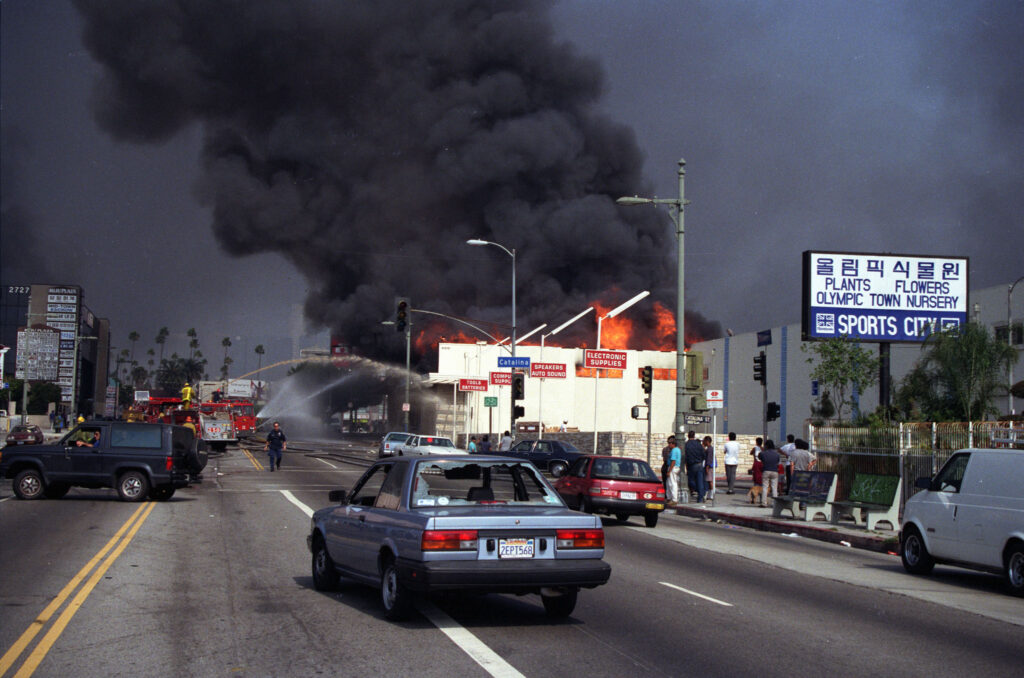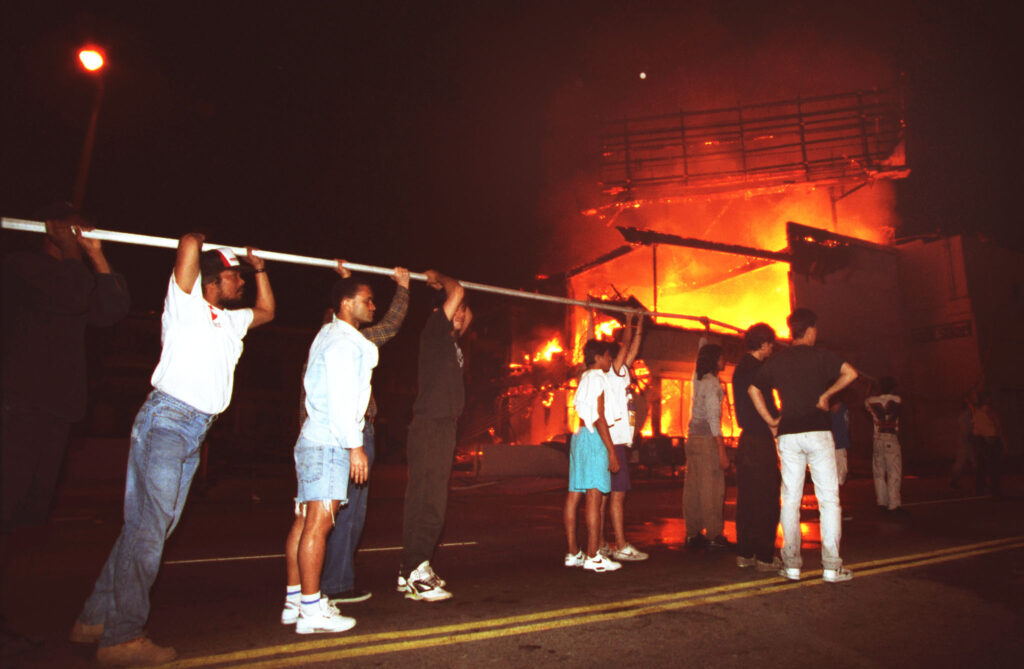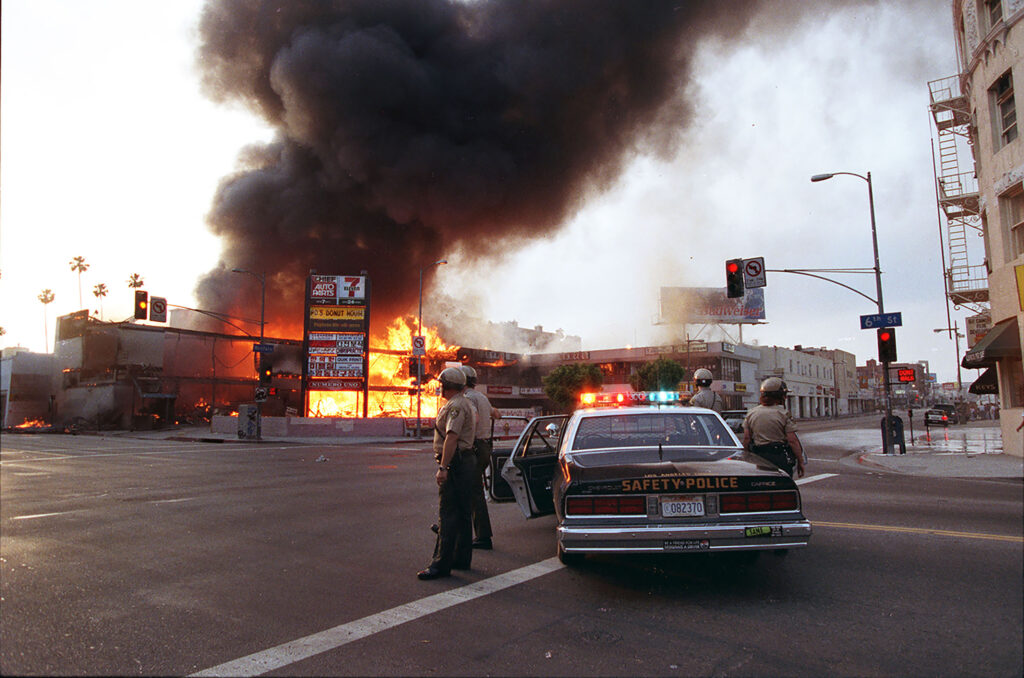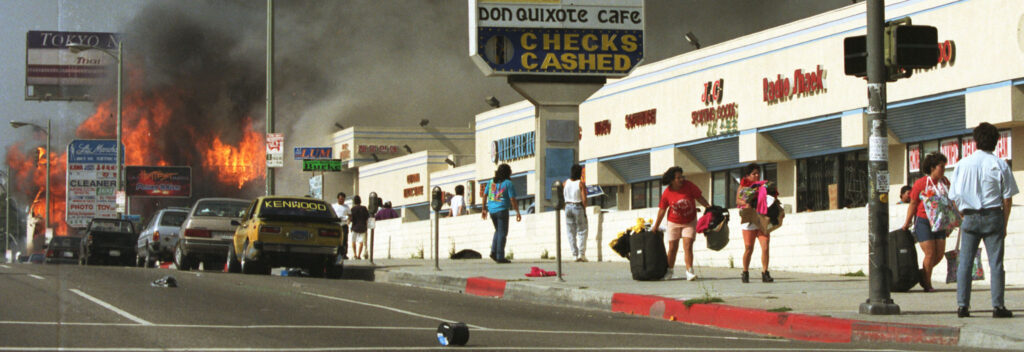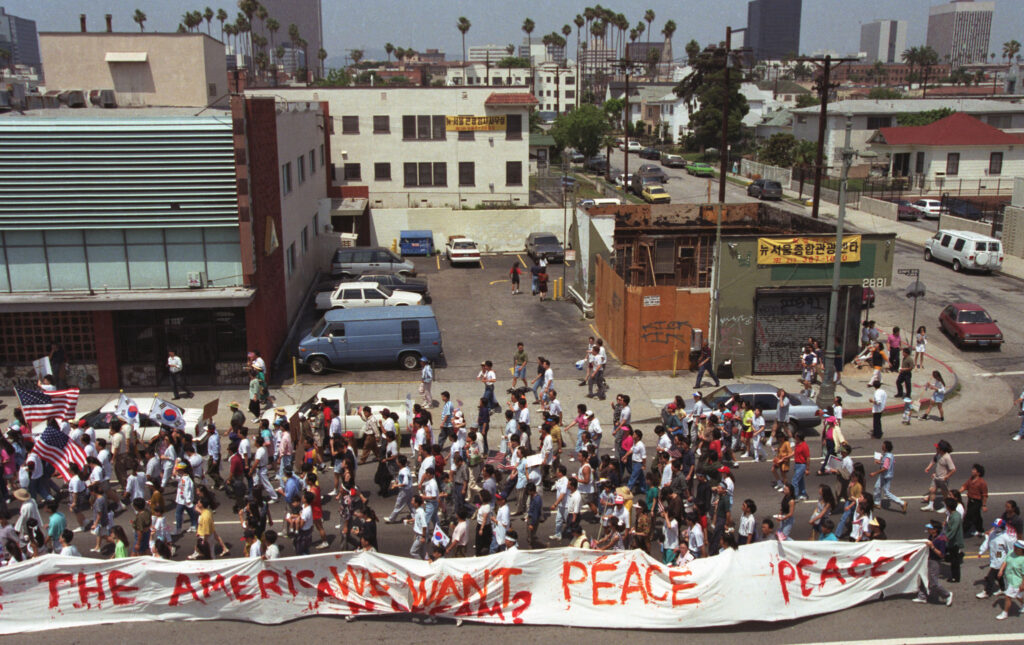Reading Sa I Gu Gallery by Hyungwon Kang
Hyungwon “HK” Kang is an accomplished columnist, front-line photographer, and a visuals editor with a track record of delivering digital contents under cost controlled and deadline meeting daily news cycle. The photographs included in this gallery were taken during the civil unrest in April-May 1992. For inquiries or use of the photographs (©Hyungwon Kang/Los Angeles Times), please contact Hyungwon Kang.
A business is set ablaze at the start of the Sa I Gu in South Central Los Angeles, California on April 29, 1992. According to Professor Edward Chang of UC Riverside, 2,280 Korean American-owned stores were either totally destroyed, looted, or suffered loss with total damage of $400 million in the 1992 Los Angeles Riots.
A corner shopping center is fully engulfed in flames as it is left burning out of control in Koreatown, on May 1, 1992 during the third day of Sa I Gu.
A Los Angeles Fire Department (LAFD) fireman responds to a building fire in South Central Los Angeles, on April 29, 1992 during the first night of Sa I Gu.
A man walks away with goods removed from broken-in shops on Vermont Ave. in Koreatown on May 1, 1992, during the third day of Sa I Gu.
Businesses continue to burn out of control in Koreatown, Los Angeles, California on May 1, 1992 during the third day of the 1992 Los Angeles Riots. According to Professor Ed Chang of UC Riverside, 2,280 Korean American-owned stores were either totally destroyed, looted, or suffered loss with total damage of $400 million in the 1992 Los Angeles Riots.
Cornelius Pettus, owner of Payless market, throws a bucket of water on the flames at neighboring business Ace Glass in Los Angeles, California on April 29, 1992 during the first night of Sa I Gu. While it is estimated that Korean businesses experienced nearly half of the total damages in Los Angeles, non-Korean-owned businesses were impacted as well.
California market owner Richard Rhee returns fire at approaching looters as he defends his grocery market in Koreatown on April 30, 1992 during the second day of Sa I Gu. Many business owners in Koreatown felt that they had to protect their businesses due to a lack of police presence.
A police officer is deployed for a shooting incident as another Korean American business is set ablaze in Koreatown, on April 30, 1992 during the second day of Sa I Gu.
First responders tend to a building fire on Olympic Blvd. and Catalina St. in Koreatown, Los Angeles, California on May 1, 1992 during the third day of Sa I Gu.
Police officers guard an intersection where a corner shopping center was set ablaze in Koreatown, on May 1, 1992 during the third day of Sa I Gu.
People help with a water hose to put out fires at a shopping center at the intersection of Western Avenue and 6th Street, as LAFD firefighters were not responding to the fire.
Police officers guard the intersection of Western Ave. and 6th St. where a corner shopping center was set ablaze in Koreatown, on May 1, 1992 during the third day of Sa I Gu.
People walk away from a burning shopping center with goods, as others watch near Vermont Ave and 1st Street, during Sa I Gu.
People march, calling for peace in Koreatown, during Sa I Gu, May 2, 1992.
A business is set ablaze at the start of the Sa I Gu in South Central Los Angeles, California on April 29, 1992. According to Professor Edward Chang of UC Riverside, 2,280 Korean American-owned stores were either totally destroyed, looted, or suffered loss with total damage of $400 million in the 1992 Los Angeles Riots.
A corner shopping center is fully engulfed in flames as it is left burning out of control in Koreatown, on May 1, 1992 during the third day of Sa I Gu.
A Los Angeles Fire Department (LAFD) fireman responds to a building fire in South Central Los Angeles, on April 29, 1992 during the first night of Sa I Gu.
A man walks away with goods removed from broken-in shops on Vermont Ave. in Koreatown on May 1, 1992, during the third day of Sa I Gu.
Businesses continue to burn out of control in Koreatown, Los Angeles, California on May 1, 1992 during the third day of the 1992 Los Angeles Riots. According to Professor Ed Chang of UC Riverside, 2,280 Korean American-owned stores were either totally destroyed, looted, or suffered loss with total damage of $400 million in the 1992 Los Angeles Riots.
Cornelius Pettus, owner of Payless market, throws a bucket of water on the flames at neighboring business Ace Glass in Los Angeles, California on April 29, 1992 during the first night of Sa I Gu. While it is estimated that Korean businesses experienced nearly half of the total damages in Los Angeles, non-Korean-owned businesses were impacted as well.
California market owner Richard Rhee returns fire at approaching looters as he defends his grocery market in Koreatown on April 30, 1992 during the second day of Sa I Gu. Many business owners in Koreatown felt that they had to protect their businesses due to a lack of police presence.
A police officer is deployed for a shooting incident as another Korean American business is set ablaze in Koreatown, on April 30, 1992 during the second day of Sa I Gu.
First responders tend to a building fire on Olympic Blvd. and Catalina St. in Koreatown, Los Angeles, California on May 1, 1992 during the third day of Sa I Gu.
Police officers guard an intersection where a corner shopping center was set ablaze in Koreatown, on May 1, 1992 during the third day of Sa I Gu.
People help with a water hose to put out fires at a shopping center at the intersection of Western Avenue and 6th Street, as LAFD firefighters were not responding to the fire.
Police officers guard the intersection of Western Ave. and 6th St. where a corner shopping center was set ablaze in Koreatown, on May 1, 1992 during the third day of Sa I Gu.
People walk away from a burning shopping center with goods, as others watch near Vermont Ave and 1st Street, during Sa I Gu.
Photos ©Hyungwon Kang/Los Angeles Times, used with permission from the photographer.
Contact Information:
Hyungwon Kang![]()
HyungwonKang@gmail.com

